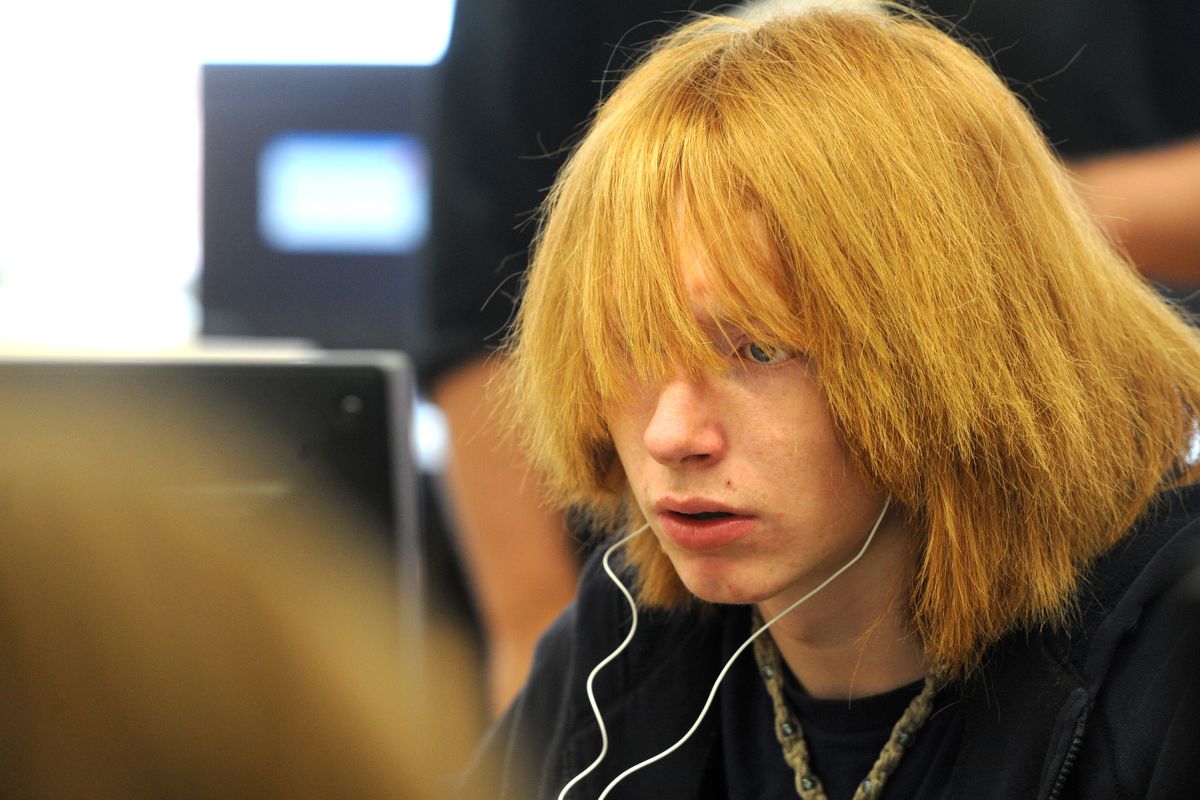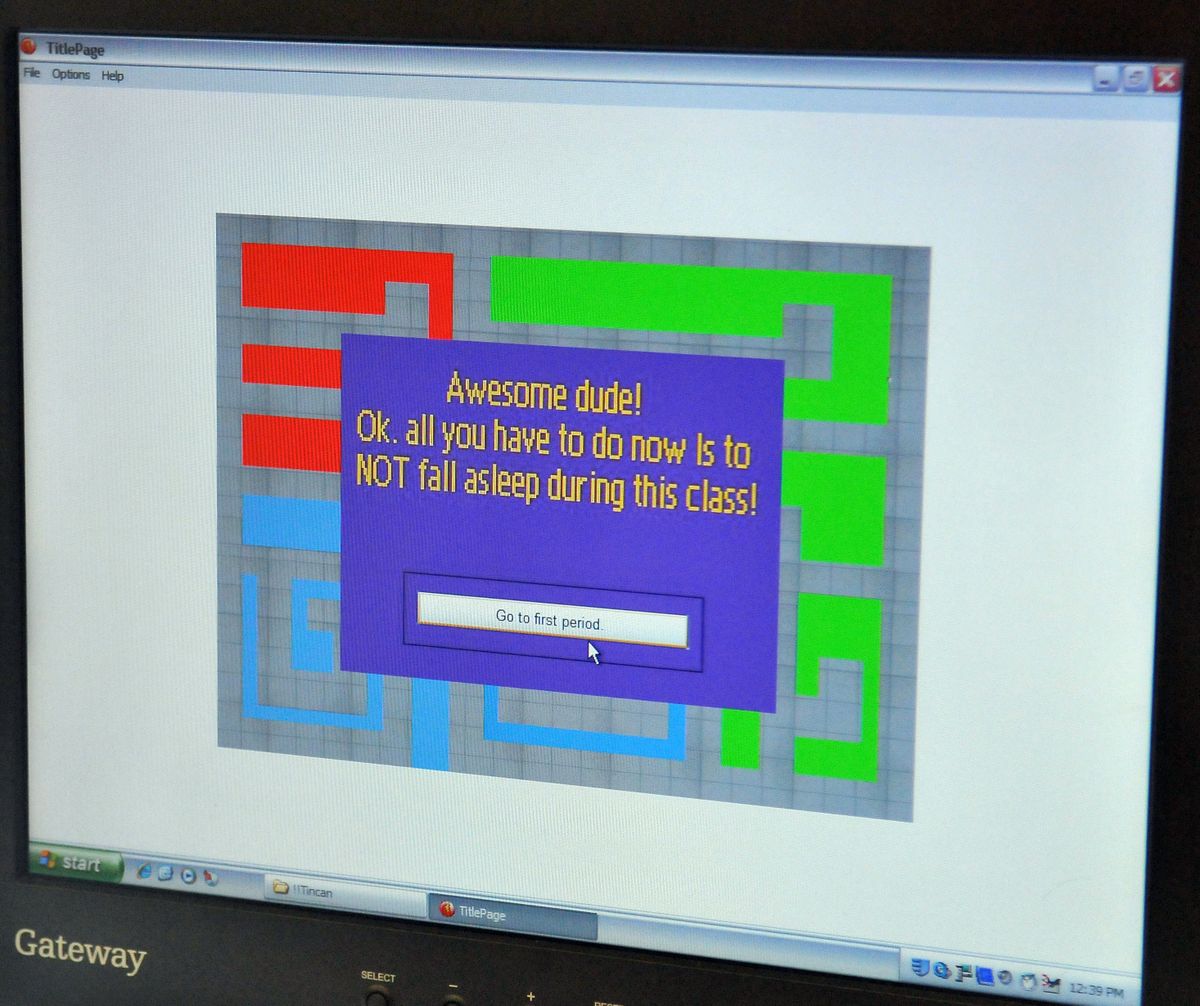A Pirate’s life for him
Interactive game puts eighth-graders in high school situations
Doug Paulson, an eighth-grader at Shaw Middle School, plays a video game, “Pirate Life: A Day At Rogers,” on Thursday. The game, designed by Rogers students, gives middle schoolers a taste of high school life at Rogers. (Jesse Tinsley)Buy a print of this photo
“Pirate Life: A Day in Rogers High School,” is a limited-release video game targeted to a specific group of players: eighth-graders from Shaw and Garry middle schools.
So far, the reviews of the game – designed by some Rogers freshmen to help Shaw and Garry eighth-graders transition to high school – are pretty good.
“Yeah, it gives me a better idea of what it will be like,” said Jared Burns, an incoming freshman from Shaw who played the game for the first time on Thursday. The experience left him a little less worried about his first day at Rogers.
Four Rogers freshmen developed the game with the help of a nonprofit, Tincan. The project was funded by a $30,000 grant from the Inland Northwest Community Foundation aimed at helping students who are at risk because of behavioral issues make the transition to high school.
“I was amazed at their creativity at creating this game,” said Nate Mannetter, Tincan’s business program manager. The nonprofit uses information technology and interactive media for education and community development. “The students could only use two-dimensional graphics – they are used to ‘Halo’ (a three-dimensional game) and games like that – and they were able to put that aside and create a fun video game.”
“Pirate Life” starts off with players waking up late for class. They have to get dressed quickly. Finding clothes and shoes is a game of concentration, comparable to “Memory,” where they have to match cards with jeans, shirts, hats and shoes.
“Once they get to school, they get to look at their schedule then it gets lost, and they have to scurry to figure out where they need to be,” Mannetter explained. This game to find the right class is reminiscent of “Pac-Man.” If they are late, they get a referral – a penalty.
“I’ve already been late twice,” said Dakota Dowd, another Shaw Middle School student who played the game.
After the players make it to the first class, they watch a video describing the general difference between middle school and Rogers and how long it takes to adjust. The player then has to make his way to a second class, “Pac-Man”-style, and to a second video talking about teachers at high school.
The next sequence, about lunch, is a racing game. The player has to dodge objects – people – to get to the lunch counter first. The reward for being first is pizza; second place is a burrito and last place is a sack lunch.
The four Rogers game designers “wanted the kids to know they have to get to lunch fast or they don’t get what they want,” Mannetter said.
After that, a third video describes the extracurricular activities and electives available in high school.
The final game is getting out of the Rogers parking lot, similar to “Frogger.”
The game is available to all Shaw and Garry middle school students.
“It should help some because it’s showing the eighth-graders what it will be like in high school,” said Christian Moody, 15, one of the students who helped design the game. “If I had had one it would have helped take off the tension moving from middle to high school. It’s kind of scary going to high school.”

